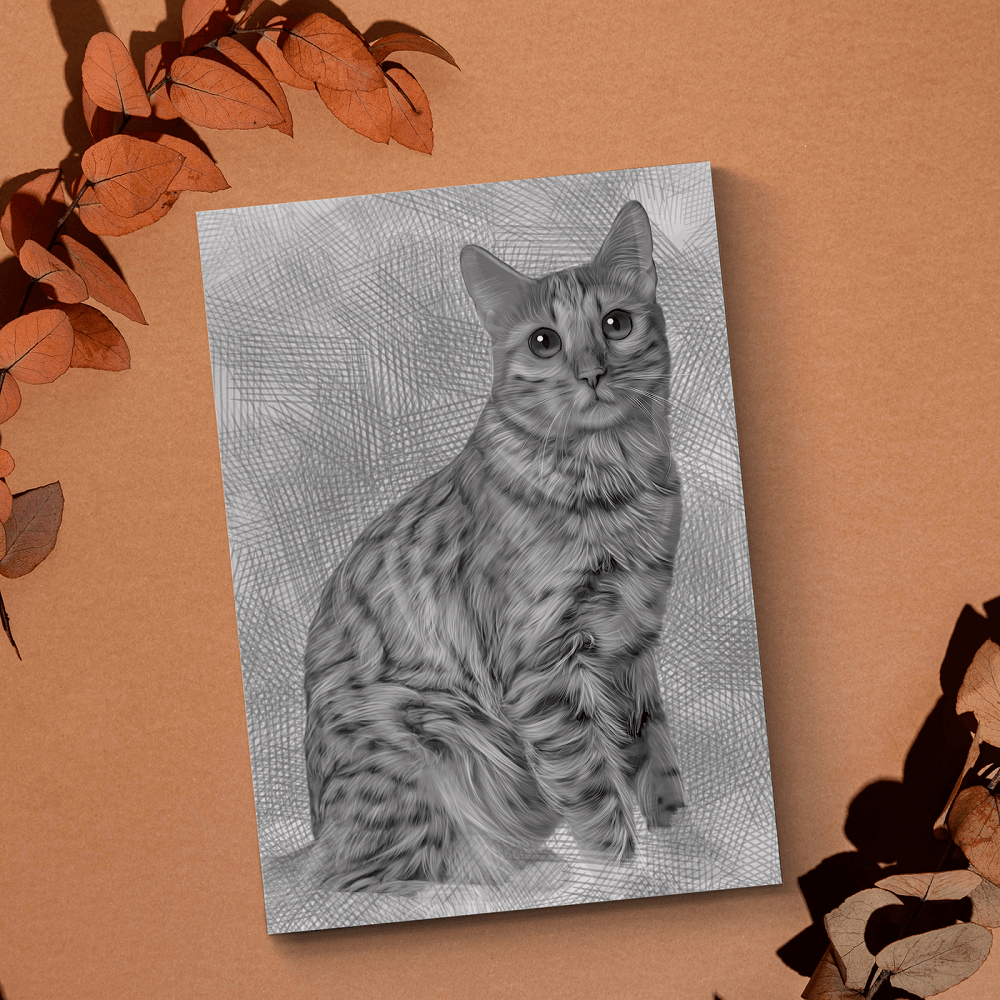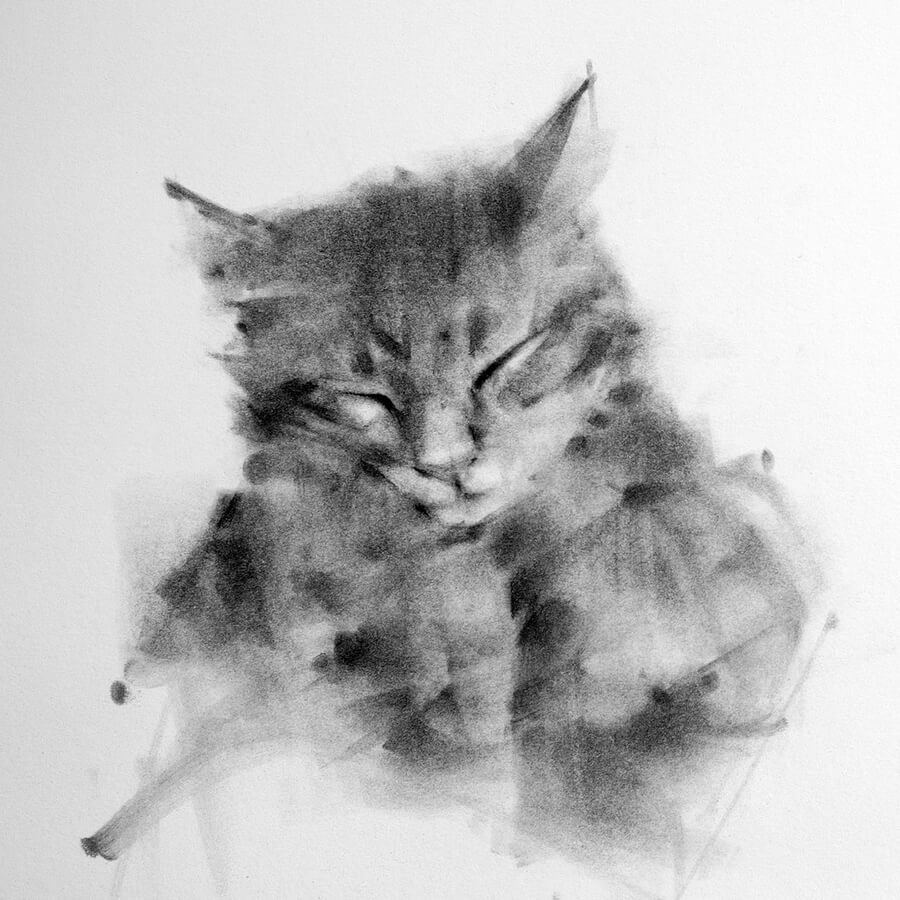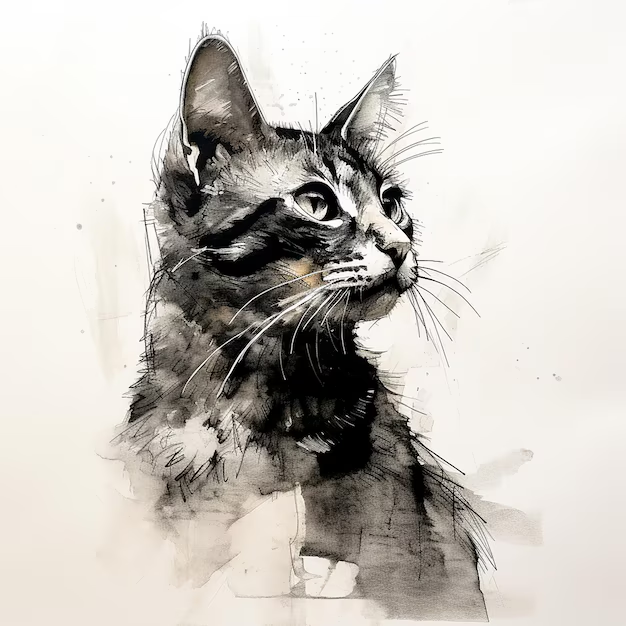Getting Started with Charcoal Drawing
Choosing the Right Tools
Charcoal drawing cat is a versatile art form that can beautifully capture the grace and elegance. To begin, it’s essential to choose the right tools. Traditional charcoal sticks and pencils provide different textures and finishes. Compressed charcoal sticks are darker and more intense, ideal for deep shadows and bold lines, whereas vine charcoal offers lighter, softer strokes, perfect for preliminary sketches. In addition to charcoal, you’ll need a good quality drawing paper with a bit of tooth to grip the charcoal particles, kneaded erasers for removing and shaping your work, and a blending stump or tortillon for smooth shading and transitions.
Preparing Your Workspace
A well-organized workspace can significantly enhance your drawing process. Ensure your drawing area is well-lit, preferably with natural light, to accurately see the nuances of your work. Arrange your tools within easy reach so you can switch between them effortlessly. Cover your working surface with a protective sheet to avoid smudging. Finally, have a reference photo or, even better, a live model of a cat if possible, as observing real-life feline movements and anatomy will make your drawings more realistic and dynamic.

Observing Feline Anatomy
Understanding Cat Physiology
To capture the grace of a cat, it’s crucial to understand their anatomy. Cats have a unique musculature and skeletal structure that allows them to move with fluidity and grace. Start by studying the basic skeletal system: the elongated spine, flexible joints, and powerful hind legs, which play a vital role in their agility. Understanding the muscle groups, particularly around the shoulders, haunches, and tail, will help you create realistic and dynamic poses. Pay attention to how muscles stretch and contract during different movements, such as stretching, jumping, or lounging.
Capturing Movement and Poses
Cats are often in motion, and capturing these movements requires keen observation and practice. Spend time watching how cats walk, stretch, and play. Take photographs or sketch quickly to capture different poses and angles. Focus on their unique postures, such as the arched back when they stretch or the way they curl up when they sleep. These observations will translate into more lifelike and relatable drawings, allowing you to depict the cat’s natural grace and character accurately.
Basic Drawing Techniques
Sketching the Outline
Begin with a light sketch to outline the basic shapes of the cat. Use vine charcoal for this initial step since it’s easy to erase and modify. Start with simple geometric shapes to map out the cat’s body: an oval for the head, a cylinder for the neck, and elongated ovals for the body and limbs. Pay attention to proportions and angles. Keep your lines loose and light to refine the shapes gradually. This foundational sketch will serve as the guide for adding details and depth to your drawing.
Adding Texture and Fur
Once you’re satisfied with your outline, you can start adding details and texture. Charcoal is excellent for creating the illusion of fur due to its ability to produce both fine lines and broad strokes. Use the edge of a charcoal stick for thicker fur lines and a sharpened charcoal pencil for finer details. Pay attention to the direction of the fur and how it lies across different body parts. Short, quick strokes can depict short fur, while longer, sweeping lines work well for areas with longer hair. Blending stumps or fingers can soften sections and create a more realistic texture, while kneaded erasers can add highlights to give the fur a more three-dimensional appearance.

Shading and Depth
Creating Light and Shadow
Shading is essential to add depth and realism to your drawing. Understanding light and shadow can dramatically improve the visual impact of your work. Determine your light source and consider how it affects the cat’s form. Use darker charcoal for deep shadows, such as under the chin, around the eyes, and beneath the body, where the light is least likely to reach. Gradually build up layers of charcoal to create a gradient effect, transitioning from dark shadows to mid-tones and lighter areas. Blending tools can help create smooth transitions, giving the drawing a more cohesive and lifelike appearance.
Enhancing Details
Adding details is what brings a charcoal drawing cat to life. Focus on the cat’s eyes, nose, and whiskers, as these are key features that capture their personality and essence. Use a fine-point charcoal pencil or a sharp edge of a compressed charcoal stick to add intricate details like fur around the eyes, the texture of the nose, and the delicate lines of the whiskers. Highlights in the eyes and around the nose, achieved by gently lifting charcoal with a kneaded eraser, add realism and depth. Integrate these details seamlessly with your shading to create a holistic and captivating portrayal of the cat.
Artistic Techniques for Realism
Blending and Smudging
Blending is a powerful technique in charcoal drawing cat that can create smooth transitions and realistic textures. Use a blending stump, tortillon, or even your fingers to soften harsh lines and blend shadows and highlights. Be mindful of over-blending, as it can make the drawing look muddy. Use smudging strategically to enhance certain areas, such as the soft fur on the cat’s belly or the delicate shadows around the eyes. Employing blending and smudging effectively helps create a more lifelike and cohesive drawing.
Emphasizing Key Features
To capture the essence of a cat, emphasize its distinguishing features. Cats are known for their expressive eyes, agile limbs, and graceful postures. Spend extra time detailing the eyes, ensuring they are reflective and vibrant, as they often draw viewers’ attention first. Highlight the fluidity of the limbs to convey their agility and elegance. Use contrast to make these features stand out; for example, darken the shadows around the eyes and under the chin to make the eyes appear more luminous. By focusing on these key elements, you enhance the character and dynamism of your drawing.

Final Touches and Preservation
Reviewing and Refining
Before declaring your drawing complete, take a step back and review it with a critical eye. Look for areas that might need more detail, additional shading, or slight corrections in anatomy. Make any necessary refinements, ensuring that the proportions, depth, and textures align with your artistic vision. Remember, the final touches can significantly impact the overall quality of your work, so invest time in perfecting small details and contrasts that enhance the realism and impact of the drawing.
Fixative and Preservation
To preserve your finished charcoal drawing cat, applying a fixative is essential. Fixatives prevent the charcoal from smudging and flaking over time, keeping your artwork intact. Use a spray fixative specifically designed for charcoal and pastel drawings, and apply it in a well-ventilated area. Hold the can at a distance and spray lightly across the entire surface of the drawing. Allow it to dry completely before handling or storing the artwork. Framing your drawing with a protective glass can further safeguard it from dust, moisture, and physical damage, ensuring its longevity and durability.
Mastering Charcoal Drawing of Cats
Recap of Key Techniques
Charcoal drawing cat is a rewarding medium for capturing the elegance and grace. From choosing the right tools and understanding feline anatomy to mastering basic drawing techniques and emphasizing key features, each step contributes to a lifelike and compelling artwork. Shading, blending, and fine-tuning details are crucial in creating depth and realism. Regular practice and keen observation will enhance your skills, making every drawing more captivating and accurate.
Final Thoughts
Charcoal drawing cat combines technical skill with a deep appreciation for the agility and beauty of these creatures. By honing your techniques and dedicating time to observing and understanding your subject, you can create artwork that not only showcases your talent but also celebrates the unique grace of felines. Embrace every opportunity to practice and refine your skills, and soon, you’ll find that your charcoal drawings capture not just the likeness of cats but their spirit and elegance as well.